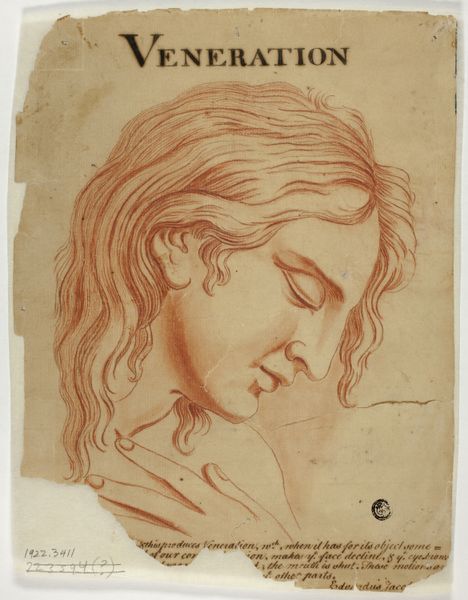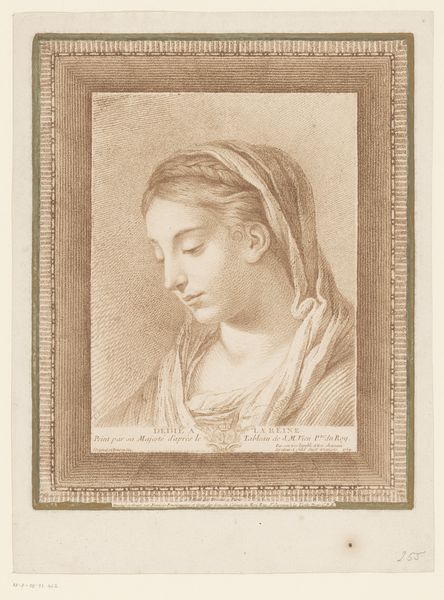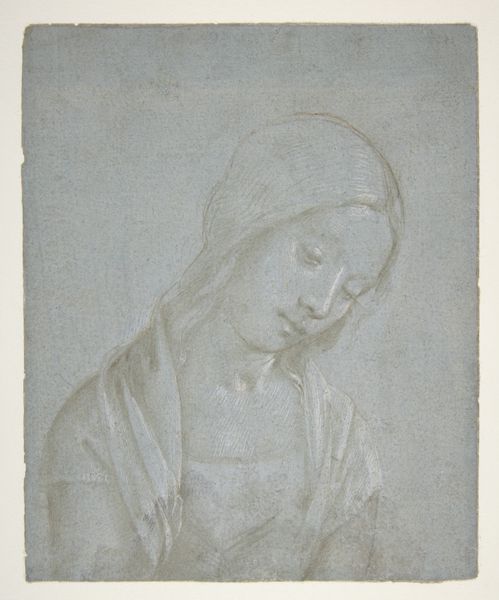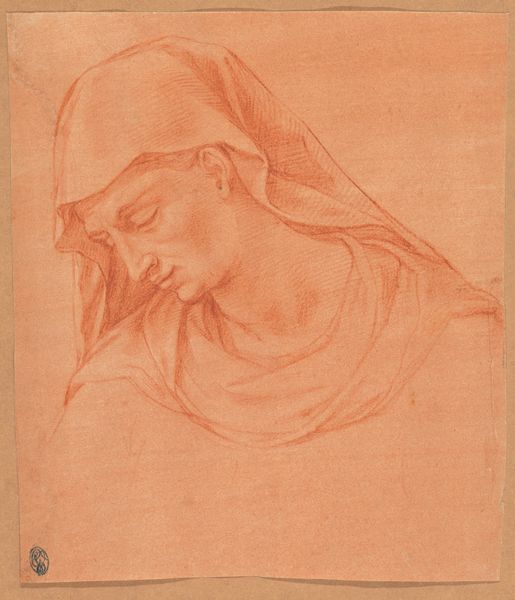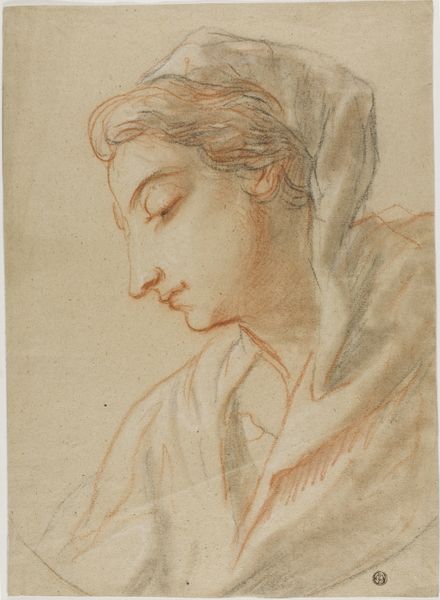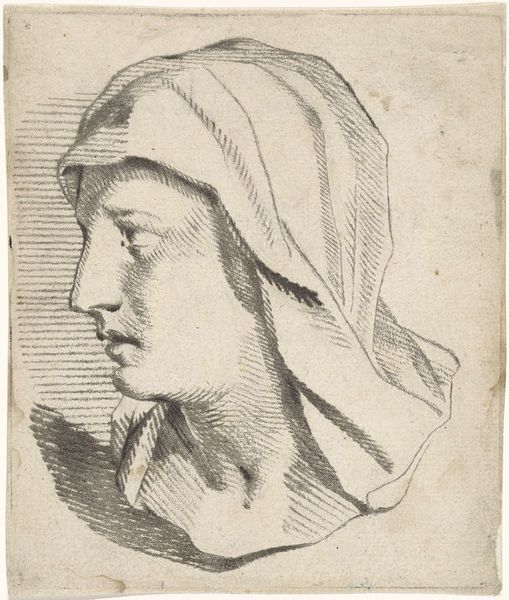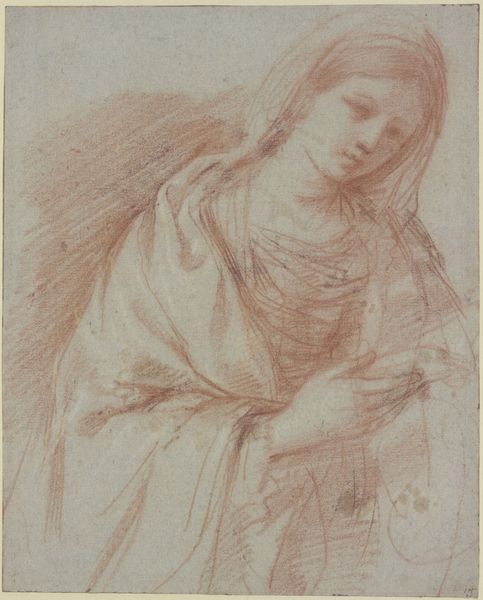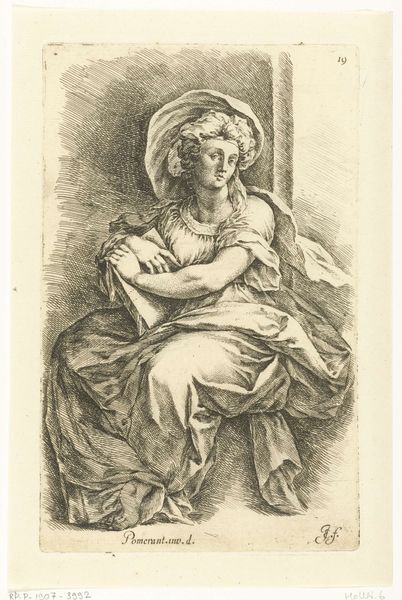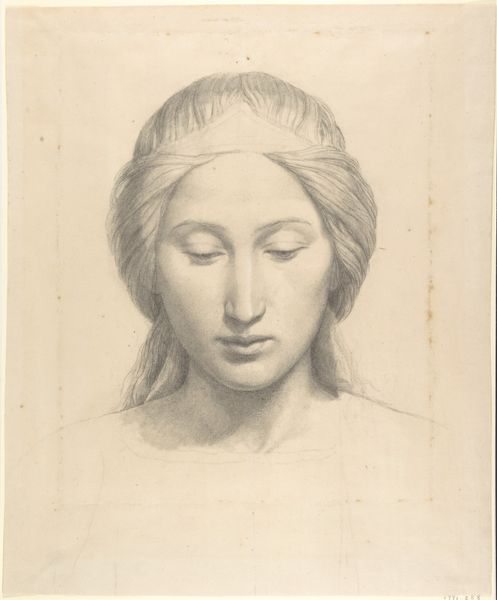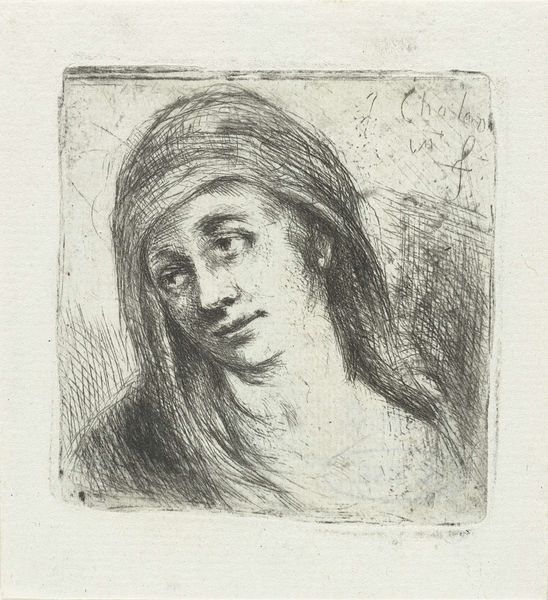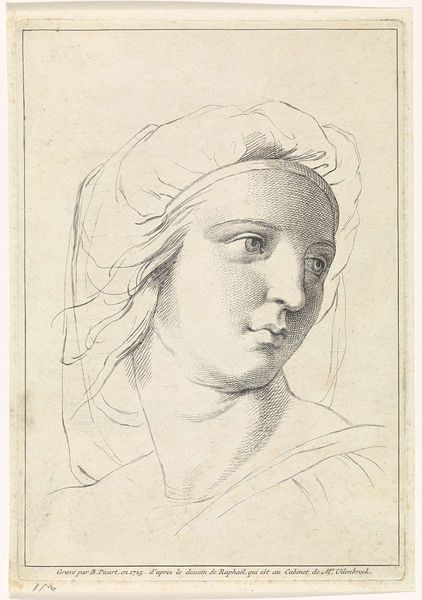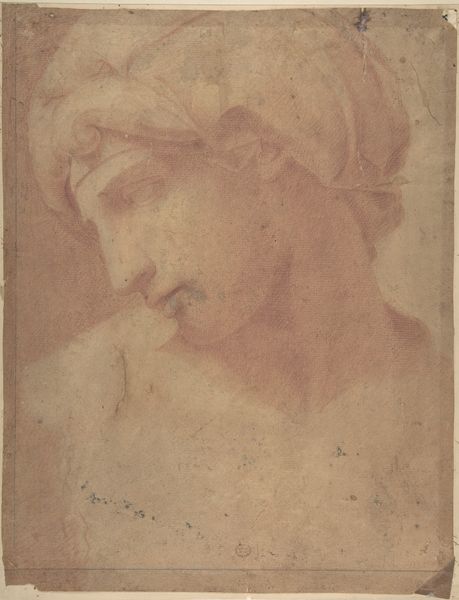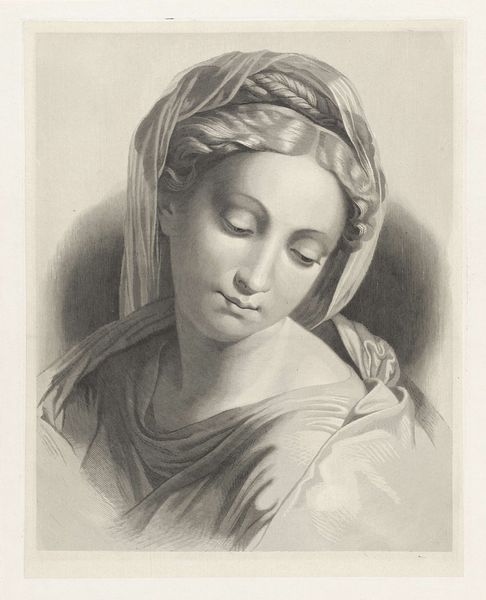
drawing, pencil
#
portrait
#
pencil drawn
#
drawing
#
neoclacissism
#
pencil drawing
#
pencil
#
portrait drawing
#
academic-art
Dimensions: height 395 mm, width 355 mm
Copyright: Rijks Museum: Open Domain
Curator: Let's turn our attention to a pencil drawing from 1793 titled "Head of a Woman with Headscarf, from the Side" by J.H. Tak. Editor: A striking work. It evokes such a feeling of serene melancholy, doesn’t it? The delicate rendering of light on her face is just lovely. Curator: It's quite indicative of the Neoclassical movement, focusing as it does on precise line work, likely in red chalk. The availability of these drawing materials in the late 18th century facilitated the widespread production of such portrait studies, which were important as a form of instruction and as collectible items. Editor: The headscarf immediately brings to mind the traditional veils representing modesty and piety, especially those worn during religious ceremonies. Is it a coincidence that her gaze is averted downwards, or is the artist subtly hinting at submission? The classical profile enforces that sense of iconic familiarity as well. Curator: I wonder about the role these types of garments played at that moment; were they a marker of social status, maybe, indicating affiliation with certain groups? How readily available and how expensive were they, relative to the value of labor at the time? Also, let's not ignore the paper. Understanding its production, trade routes, would give more nuance, and insight, into the networks which sustained Tak's artistry. Editor: True, yet I can't help but also see echoes of timeless ideals of beauty. The simple lines capture something profound about the human condition. A sort of universal symbol for mourning, perhaps? Curator: A great interpretation, and the social dimensions of this drawing surely adds weight to any singular meaning that this drawing seems to indicate. Editor: Absolutely. Seeing the artwork from the perspective of material production enriches our encounter significantly. Curator: And looking closely for potential significations rooted in symbolic tradition only enhances our engagement with the image.
Comments
No comments
Be the first to comment and join the conversation on the ultimate creative platform.
